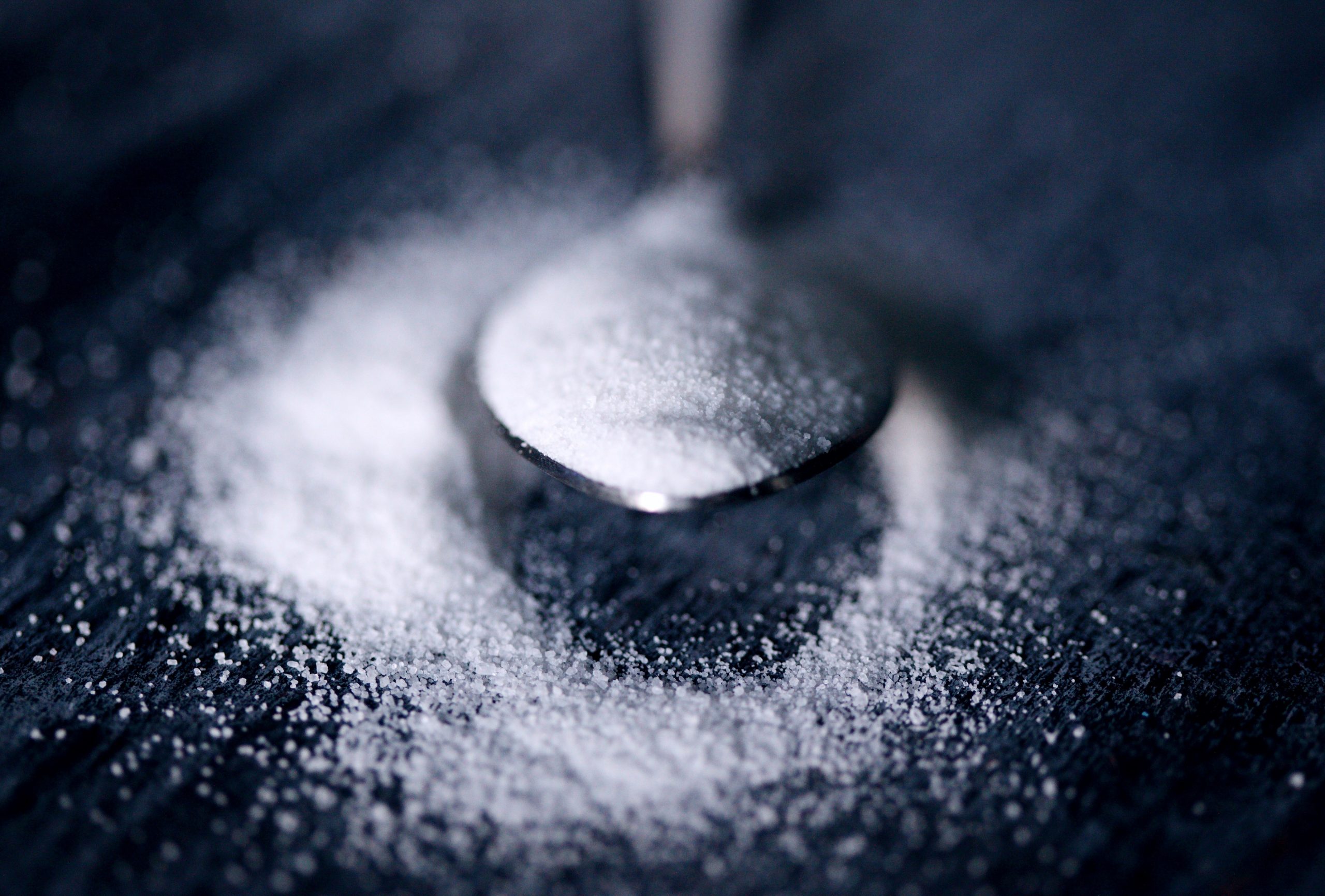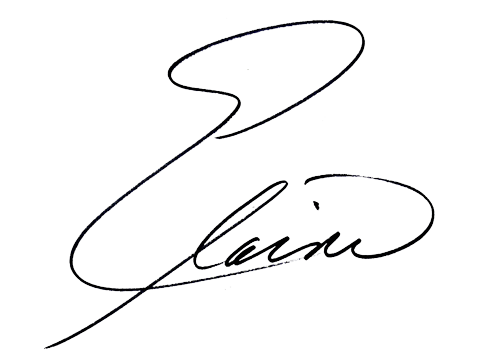Here’s a fix you might not have thought of . . .
“Our cholesterol levels have been declining, and we have been smoking less, and yet the incidence of heart disease has not declined as would be expected . . . ‘It suggests that something else bad is happening.” Walter Willet
I had dinner with some friends recently.
Looking at them you’d consider them healthy – lean, fit – nothing physically off.
You’ll never guess what they complained of . . .
Lousy cholesterol numbers! High triglycerides. High LDL – the blood markers we consider the “bad” ones.
“What gives?” They wanted answers.
“I eat my vegetables . . .”
“I work out . . .”
“I’m a pretty good sleeper . . .”
“I meditate . . .”
“I don’t eat fats” (oops – more on this below)
We checked off an entire list of healthy habits. Just one was missing or never considered . . .
“How much sugar do you eat?” I asked.
Conversation stopped.
Sugar?
“What does sugar have to do with it???”
In a word: Everything.
Clogged arteries
We often attribute the cholesterol/plaque buildup in our blood vessels to the fat we eat. After all, that’s the message that’s been drummed into us for the last 50 years – since USDA issued its 1977 nutritional guidelines urging us to cut fat and increase carbs.
6 to 11 servings of “bread, cereal, rice, and pasta” was their prescribed antidote to halt the growing epidemic of cardiovascular disease (CVD).
But that didn’t change a thing.
Today heart disease is at an all-time high and the leading cause of death in the world – 18.6 million deaths globally in 2019.
It’s not the fat
Dr. Robert Lustig, a pediatric endocrinologist at UCSF, and one of the world’s experts on the subject, says it’s not fat that causes our arteries to clog up, but instead, something quite unexpected . . .
It’s the sugar.
“A diet high in added sugars has been found to cause a 3-fold increased risk of death due to cardiovascular disease.”
Sugar is a “toxin”, notes Lustig in his lecture “The Bitter Truth” – especially in the high qualities most consume today. It’s estimated that about 60% of the calories Americans consume come from SUGAR and that’s “bad news” for us.
Sugar damages the vessel walls and ramps up “inflammation” – the body’s natural protective response to injury. In its attempt to repair the vascular damage, deposits of cholesterol are laid down and over time can create a buildup of plaque.
And sugar does exactly what was happening to my friends . . . increase triglycerides, increase LDL, and lower HDL.
“When carbohydrates (particularly refined carbohydrates like sugar) replace saturated fats, the result can have unfavorable effects on lipid profiles: Total cholesterol tends to increase, HDL tends to fall, and triglycerides – also associated with Coronary Heart Disease – tend to rise.”
A study out of Touro University California reported a drop of 33% in triglycerides and expanded on research that found restricting sugar – without restricting calories or total carbs — reversed a cluster of metabolic diseases in children, including high cholesterol and blood pressure.
Both human and animal studies show various metabolic risk for CHD with high sugar diets (e.g., impaired glucose tolerance, insulin resistance, elevated uric acid level, and altered platelet function). All of these abnormalities can be reversed when reverting to a diet low in sugar.
The Low-Fat Craze
Where’s all the sugar coming from?
When the food industry got wind of the research at that time (that fat was the culprit in Cardiovascular Disease), they created a “fat-free” food supply for us. Fat came out and sugar came in to make up for the flavor that was lost when you extract the fat.
The addition of so much sugar also caused another slight problem – addiction – as sugar is considered many times more addictive than most street drugs.
“When rats (who metabolize sugar much like we do) were given the choice between water sweetened with saccharin and intravenous cocaine, 94% chose the saccharin water.” M. Lenoir
Sugar, sugar everywhere!
Check out the label of any “processed” foods and you’ll likely find various assortments of sugar with names you’d never recognize or even associate with the sweet stuff. Even foods you wouldn’t consider sweet – like bread, ketchup, condiments, salad dressings, and processed cold cuts often have added sugars. Yoplait Fat-Free Yogurt, for instance, packs 26 grams of sugar (6 teaspoons) in one of those teeny 6-oz containers.
Some tips for you
The question remains: How do we detox from all the sweet stuff and clean out our vascular pathways? Here are some ideas for you . . .
- Go cold-turkey – If you’re an all or nothing kind of person, go check out the Whole-30 plan – an elimination diet that literally takes every gram of sugar (among a few other things) out of your diet for 30 days. That’s long enough to change your taste buds (you won’t crave the stuff anymore) and your cholesterol numbers should improve as well.
- Go Gently – If you’re like most, a gentle approach might be easier. Start to pay attention to the sugar you add to your food and drinks – like the 2-3 teaspoons you put in your coffee every morning. Gradually, cut it back. A few days of 2.5 tsp . . . then 2 . . . then maybe even 1.5 . . . Your tastebuds naturally adjust and less sugar will start to taste as sweet as the 3 used to.
- Switch to coconut sugar – Coconut sugar has a lower glycemic index so it doesn’t hit the bloodstream as hard and as quickly as white sugar. It also carries some nutrients and antioxidants that are absent in the white kind. But please . . . don’t pile on as much of this as you want. It’s still sugar and should be used sparingly.
- Get sodas and fruit juice out – If you’re a juice-aholoic, now’s a good time to revisit this. A single 12-oz can of coke contains 39 grams of sugar – that’s about 9 teaspoons of sugar. When was the last time you added 9 teaspoons of sugar to anything??
- Don’t even think about switching to sugar substitutes – Sugar substitutes might seem like a great invention, but they’re “Not Sweet Nothings”, writes Dr. Michael Greger. They’re many times sweeter than regular sugar, changing your perception and cravings for sweet things. And, unexpectedly, they’re linked to weight gain, metabolic issues, and even migraines.
- Read labels – My quick course in Label Reading . . . if there are more than 6 ingredients and I can’t pronounce any of them, I don’t buy it. Another approach: look for High Fructose Corn Syrup HFCS on the label. Be aware that it may also go by other names like “fructose” or “fructose syrup”. (Catsup is a great example. Heinz makes two brands. At first glance, they look identical. But on closer examination, you’ll notice a slight difference. One’s organic. The other is the “original” brand. Guess which one has the HFCS? You’ll only find it if you read the label.
(Do the math whenever you read a label. Look at the grams of sugar per serving and divide by 4 – that will give you an approximate number of teaspoons of sugar in a single serving.)
- Add Lemon – This is a tip if you don’t want to give up your fav cocktail – and who would blame you? Adding a hunk of lemon brings down the glycemic index of the drink – or anything you happen to be eating with it. The American Diabetes Association even lists lemons as a diabetes superfood for this reason.
Another strategy for the bold among you
Join me in a fasting challenge.
5 consecutive days per month . . . 3 consecutive months . . .
with the Prolon Fasting Mimicking Diet (FMD), a scientifically calibrated food plan, providing just enough high-quality, plant-based food to nourish you while putting your body in a fasting state.
Three cycles of this program will not only help you to shed some of that excess pounds you may have built up over the years, but it can also literally change you. Change your eating patterns, your cravings, your size, and even your spirit.
Most notable, fasting is a key to healthy longevity.
Fasting, when you carry it out long enough (in this case, 5 days) does something nothing else can do – it triggers a deep cellular cleansing and regeneration which essentially builds a younger, stronger you.
An independent clinical study of those going through the Prolon three cycles show the following benefits:
- An average of 5.7 lbs and 1.6 inches off their waist circumference.
- Improvements in metabolic health
- Lean body mass is maintained
- Visceral fat lost
- Cellular turnover and rejuvenation
- Increases in stem cell and human growth factor production (both healing mechanisms)
- Reduce the risk of several cancers and improve the antitumor activity of standard treatments against already established malignancies.
Here’s the plan:
Month 1 – March 1 – 5
Month 2 – April 5 – 9
Month 3 – May 3 – 7
Join me for one or all three sessions. (Studies have shown that the best and most sustainable results come when you stay with it for three consecutive months. After that, you can repeat the program as you feel it’s needed for a little internal house cleaning or additional weight loss.)
Go here to learn more and to sign up . . .
PS – Order before February 16 to be sure you get your package in time.
In love and health,
Your Youthkeeper ♥
Disclaimer: I’m not a scientist or a doctor. I’m a health professional trained and certified in functional medicine and holistic health with a deep desire to understand the details of how our bodies work, what causes illness, and how to avoid the chronic illnesses that are so prevalent today. The content and opinions expressed here are mine – backed by the best most legit research and science I can find. The information on this site is not intended or implied to be a substitute for professional medical advice, diagnosis or treatment. All content contained on or available through this web site is for general information purposes only


Leave A Comment